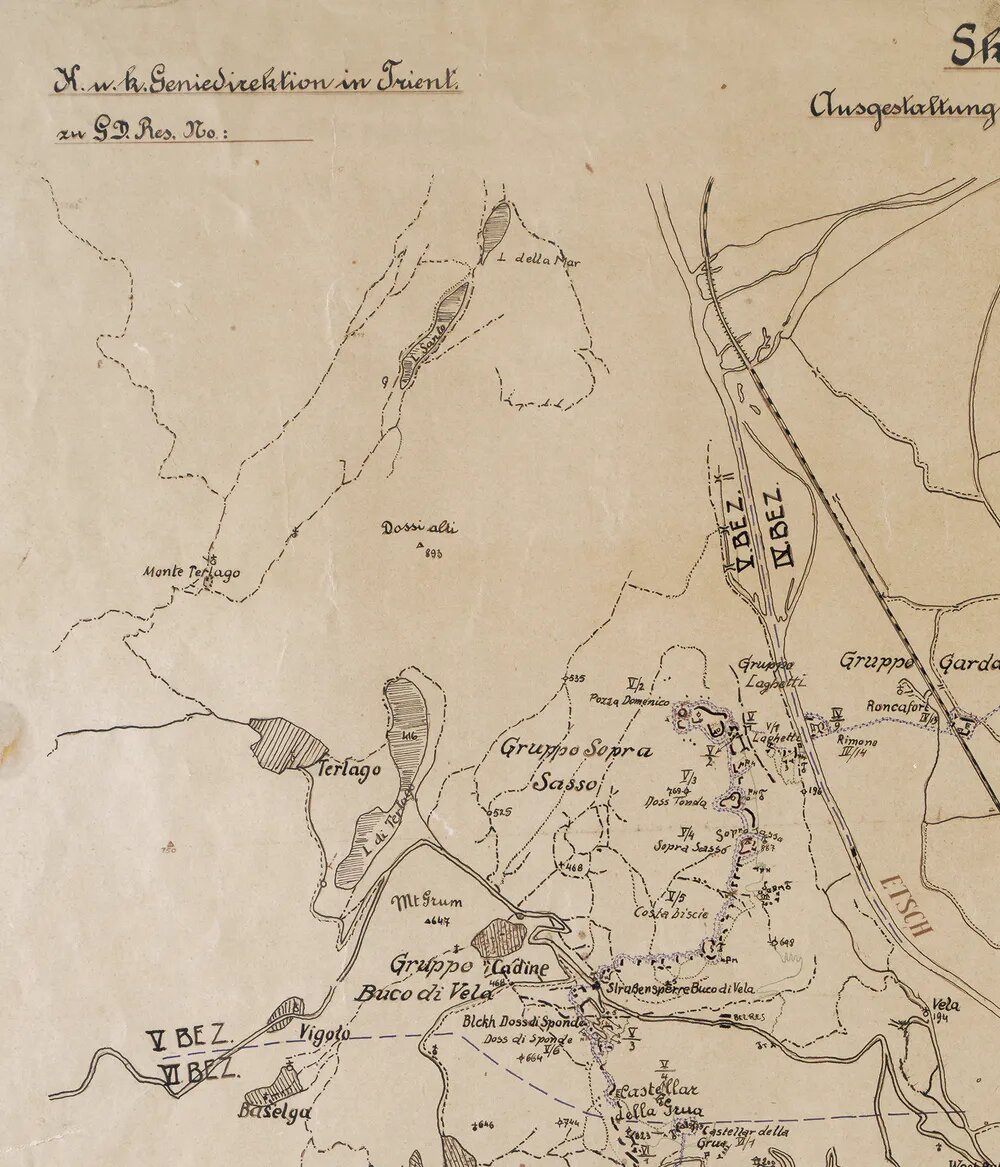At the outbreak of the war, numerous new fortifications were added in this sector. Mount Soprasasso was fully fortified, with batteries controlling both access from the Laghi Valley and the Adige Valley. Following an easy circular itinerary, visitors can explore the fortifications at the summit of Sorasass, enjoying exceptional views of the Adige Valley. The two 19th-century forts were disarmed, and their artillery relocated to new positions.
Fort Cadine – Bus de Vela deserves a visit: it is a road cutting that controlled the route to Trento through the narrow Vela Valley. In the road tunnel of the fort, where cars passed until 2003, the legendary footprints attributed to Saint Vigilio are still visible. The structure has been restored and is managed by the Trentino Historical Museum Foundation.
Suggested itineraries:
- The Sorasass Loop
- From Vela to Sorasass via the San Vili Trail
The Fortifications
Fort Cadine – Bus de Vela
Construction period: 1860–1861
Type: road cutting
Ownership: public
Open to the public: visitable
Condition: restored
Disarmed: 1915
It was designed to block access to Trento, controlling the Bus de Vela. The road closure relied not only on a gate but on the entire structure, making it unique among Trentino road cuttings. Built from limestone blocks, it included artillery and rifle casemates, and some service areas were underground. Through a tunnel, one could reach a barbette artillery position. The fort was connected to the overlying Dos di Sponde blockhouse via a military road. Disarmed in 1915, it later served as a road checkpoint. Restored and equipped with exhibits, it is managed by the Trentino Historical Museum Foundation and is open during certain periods of the year.
Blockhouse Dos di Sponde
Construction period: 1860–1861
Type: blockhouse
Ownership: private
Open to the public: no
Condition: restored
Disarmed: 1915
